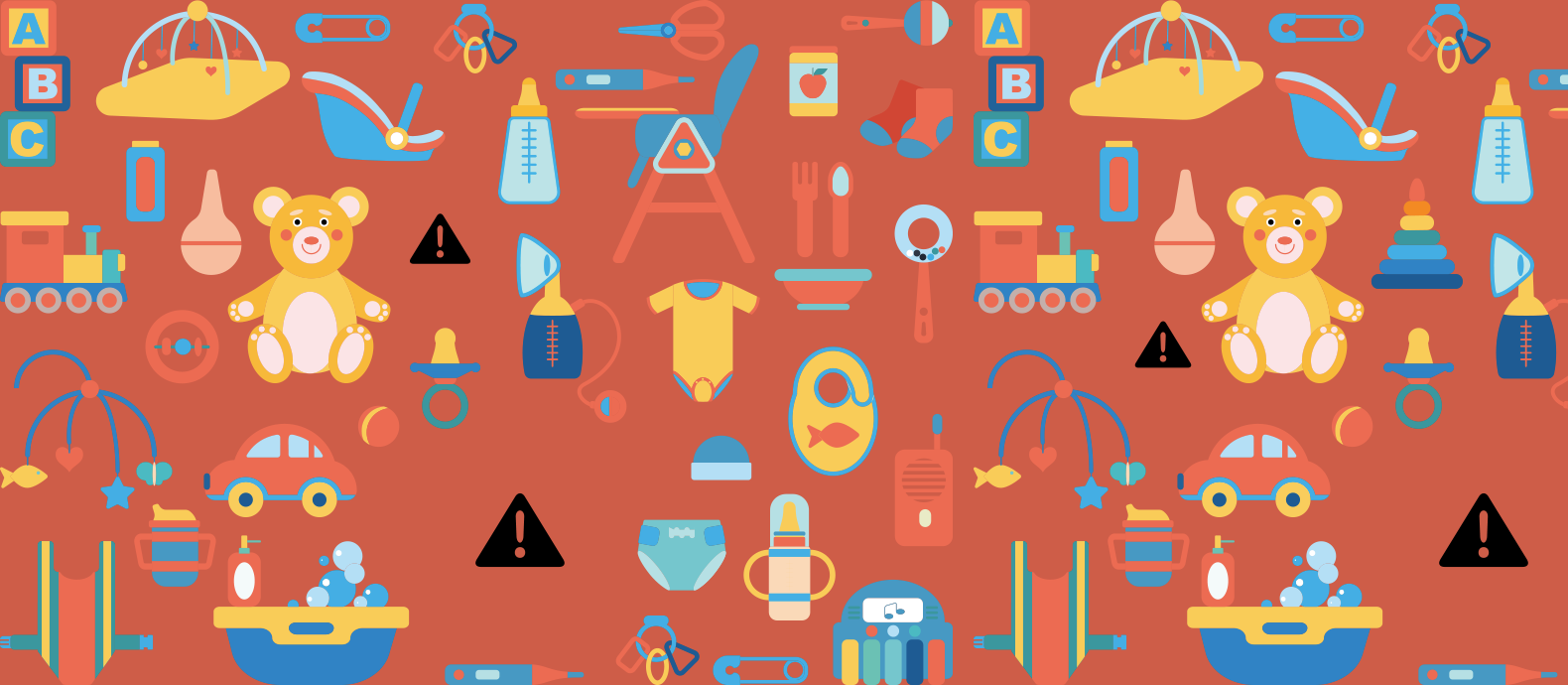Red Points’ market research highlights the increasing presence of fake baby products online and the behaviors that put consumers at risk of buying counterfeits.
- Around 30% of consumers have bought a fake baby product online at some point
- Most consumers are unable to identify fake baby products online
- Many consumers have shopping habits that put them at risk of buying counterfeits
- Despite being primarily motivated by product safety, low prices tempt consumers into risky buying behavior.
Fake baby formula legacy boosts western brands
The baby and infant market has seen steady growth in the past ten years, with the market expected to grow from $73 billion in 2018 to $81 billion in 2020. This expansion has been aided by the growing appetite for western baby brands in Asia and particularly in China. Some have argued that the 2008 fake baby formula scandal had a lasting impact on parts of Chinese society and began the still increasing demand for western baby brands. The expanding market has allowed for new players to enter.
Big players in the market have seen increased competition from niche brands and innovative products. Fisher-Price saw an 11% drop in sales between 2016 and 2017, in part due to the slew of new brands pushing into their market share. Brands such as Owlet, have been able to amass a large following in only 4 years since their creation due to capitalizing on new technologies and trends.
Counterfeiters target innovative baby products
However, where there is money to be made, counterfeiters are usually not far behind. In many cases, counterfeiters are quick to respond to market fluctuations. Innovative products are usually struck the hardest by counterfeits. This is largely due to the fact that consumers tend to purchase these products due to their functionality and not because of any brand loyalty or even awareness. A good example of this is EzPz’s Happy Mat product, a creative solution to messy eaters. However, there have been cases of parents buying fake Happy Mats unknowingly. Many brands have responded with information pages on their websites warning consumers what to look out for.
How big is the problem of fake baby products?
Red Points’ conducted a market research with baby product consumers in 2018. The research suggests that 30% of consumers have bought a fake baby item of some sort. If this number reflects the true amount of shoppers to buy a fake item, then these counterfeits are prolific online. From those consumers who had bought a fake baby item, the research revealed that 70% did so without knowing the item was fake at the point of purchase. It would be fair to say that there are more consumers who bought a fake baby item but have never known. It’s clear that fake baby items in the market are a significant problem facing both brands and consumers.
Where do people buy fake baby products?
Given the size of Amazon and the sheer volume of products and brands on the site, you would expect it to be the largest source of counterfeits, with 43% of all the counterfeit purchases in the survey bought from the site. Again, in the same fashion, due to its size and popularity, 14% of fake items were bought on eBay. Wish.com, a site growing in popularity, was the source of 13% of counterfeits. Wish.com offers consumers goods at extremely low prices, therefore it’s an excellent place for counterfeiters to showcase their products, catching consumers looking for a bargain.

Alibaba and Aliexpress, sites that had previously gained a reputation for counterfeits, only accounted for a small percentage of all the fake items. However, this could be due to the fact the sample from the U.S. and these sites are not as popular as other online shopping options.
Perhaps the most interesting result was that Facebook and Instagram provided 16% of counterfeits. Considering that these are not commonly used for the sales, it is concerning that a significant proportion of counterfeits were bought from them.
Why do people buy fake baby items?
As mentioned, the majority of consumers who buy fake items are unaware they are not buying the authentic brand. This is largely due to a number of online shopping behavior that put people at risk such as:
- Consumers overestimate their ability to spot fakes
- Using a limited number of elements to evaluate a listing
- Being motivated by “discount” offers
Fake baby bottles show consumers they’re overly confident.
Red Points’ research found that many consumers believed that fake items would be easier to identify than they actually are. To test this, people were asked how confident they were that they would be able to spot a fake baby item online. Only 9% of the people surveyed said they were not confident they would be able to correctly discern fake items from real. The respondents were then shown a series of photos of both real and fake baby items.

These photos show well-known baby items, such as the Comotomo baby bottle and the teething aid product, Baby Banana. Alongside these are products that were listed as authentic items but are in fact fake versions. After viewing these items consumers were asked to re-evaluate their confidence. Naturally, non-confident answers doubled and confident ones fell.
Consumers are overly reliant on reviews
When consumers shop online, many consumers use a whole a host of techniques to evaluate a product, especially if it is a new site to them. However, when people in the survey were asked how they evaluated the authenticity of a listing, many only selected reviews and star ratings.

The next most popular response was to use the quality of the photos, which we’ve already learned is not a reliable method. Generally, consumers should use elements such as the website the item is on, the shipping location and the price of the product to help them decide on the authenticity of a product.
Consumers are opportunists
Despite the fact that safety standards proved to be the most important factor for our sample, over 50% of people surveyed said they would be willing to buy a fake baby item if the price was sufficiently lower than the genuine brand. This shows that consumers are heavily driven by price, even when it comes to baby items.
The consumers who had purchased a fake baby product were asked what their original intention was prior to buying the counterfeit. Only 9% of consumers were actively looking for a fake version of a brand. This means that the majority of consumers found a fake by accident when searching for a genuine product. While some of these consumers suspected the item was not genuine, many did not. Therefore, these consumers acted on an opportunity but did not actively look for counterfeits.
One-Pager-ToysBaby brands: How and why to combat fakes
When asked if they were concerned about fake baby products, 57% of consumers said they were concerned. Only a small amount of people said they were not worried about the issue. Also, the survey asked consumers who they felt was responsible for removing fake items and 57% felt it should be done by the platform the fake is on. 19% of people believed counterfeits should be removed by the brands themselves. This information shows us that consumers expect something to be done about fake baby products and brands who are not seen to be pro-actively protecting their customers stand to lose consumer trust as well as sales.
To protect their customers and brand value can do a number of things baby product producers can do to combat fakes, such as:
- Creating information pages about fakes on the brand’s website
- Being active on social media – sharing information, and warnings
- Proactively searching for fakes and getting rid of them on e-commerce platforms
A combination of these tactics can reduce counterfeits to a negligible and help prevent problems before they arise. It goes without saying that fake baby products can have extremely harmful effects if they are not held to any safety standard. The result of one such incident wrongly attributed to the real brand can destroy a brand’s reputation. The case of the fake baby formula in China reminds us that even though the danger has been removed and the issue dealt with, consumers are not willing to take any chances.







